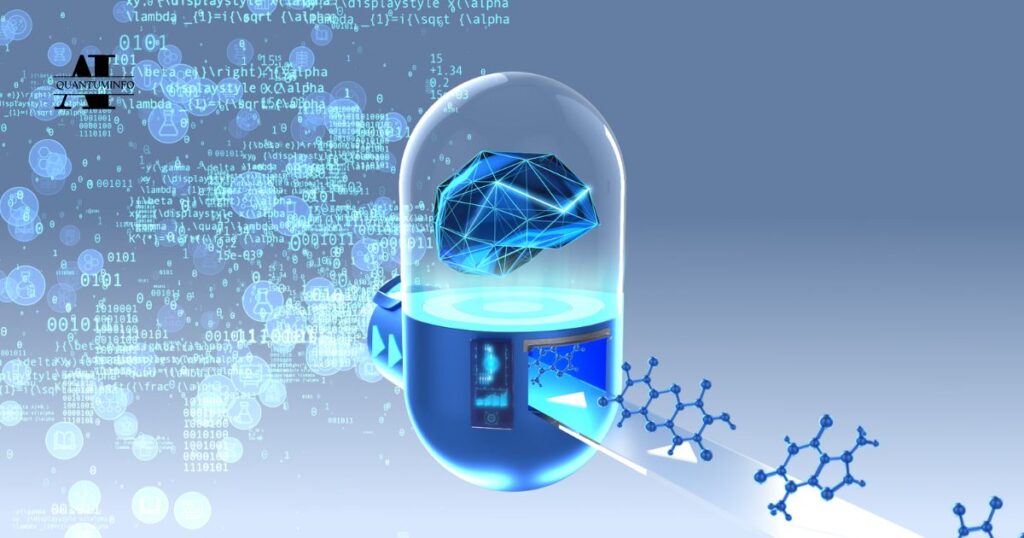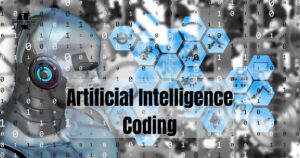Artificial intelligence (AI) is changing the field of drug discovery. By rapidly analyzing large amounts of data, AI accelerates the process of finding new treatments. This technology helps researchers develop better, safer drugs with greater precision. AI-driven drug discovery is paving the way for next-generation therapies. It is a key player in the future of healthcare innovation.
What if life-saving drugs could be discovered in a fraction of the time? With artificial intelligence (AI), this is becoming a reality. AI doesn’t just accelerate drug discovery; This makes medicines safer and more effective. This cutting-edge technology is revolutionizing healthcare, ushering in a new era of next-generation therapies.
Life-saving drug discovery just got faster and smarter. Artificial Intelligence (AI) is shaping the future of medicine. AI not only accelerates drug discovery but also enhances safety and effectiveness, ushering in a new era of cutting-edge therapies in healthcare.
Understanding AI and its role in drug discovery
Artificial intelligence (AI) refers to computer systems that can perform tasks that normally require human intelligence. This includes learning from data, recognizing patterns, and making decisions. In drug discovery, AI is used to analyze large datasets.
These datasets may contain information from scientific studies, patient records, and chemical databases. AI can quickly identify which compounds have the potential to become effective drugs. AI plays several key roles in drug discovery. First, it can sift through vast amounts of data to find patterns that might not be obvious to human researchers.
For example, AI can look at millions of chemical compounds and predict which ones are most likely to interact with a particular protein in the body. It accelerates the early stages of drug discovery, where potential drug candidates are identified.
Second, AI helps design new drugs. By predicting how different chemical structures will interact with the human body, AI can guide scientists to create compounds that are more likely to be effective and safe. This reduces the risk of failure in later stages of drug development.
Finally, AI can help predict how well a drug will work in different patient populations. By analyzing genetic data, AI can predict how different groups of people might react to a drug, leading to more personalized treatments.
Traditional drug discovery process

Before the advent of AI, drug discovery was a long and complex process. This usually involves several key steps. The first step was to identify a biological target, such as a protein associated with a disease. Scientists will then look for chemical compounds that can interact with that target.
This step, known as the hit discovery step, involves screening thousands or even millions of compounds to find those that show promise. Once potential leads were identified, the next step was lead optimization. In this step, scientists will modify their chemical composition to improve their effectiveness and reduce side effects.
This process is followed by clinical testing, where compounds are tested in laboratory animals to assess their safety and efficacy. If a compound passes preclinical testing, it will move on to clinical trials in humans. These trials usually take place in three phases, each involving a larger group of participants.
Here, AI In Insurance Paving The Way For Innovation
The objective was to assess the drug’s safety, effectiveness, and optimal dosage. If the drug successfully passes all three stages, it will be submitted to regulatory authorities for approval. This traditional method of drug discovery is very time-consuming and expensive.
On average, it takes more than a decade and costs billions of dollars to bring a new drug to market. Moreover, failure rates are high, with many potential drugs failing in later stages of development. This makes drug discovery a risky and resource-intensive endeavor.
How AI is revolutionizing drug discovery
AI is changing this traditional process by making it faster, more efficient, and more accurate. One of the primary ways AI is revolutionizing drug discovery is to speed up the hit discovery phase. AI algorithms can rapidly analyze vast amounts of chemical data and identify potential drug candidates in a fraction of the time using traditional methods.
This reduces the time and cost associated with the early stages of drug discovery. Another important impact of AI is to improve the accuracy of drug development. AI can predict how well a drug will work based on its chemical structure and how it interacts with biological targets.
This allows scientists to develop drugs that are more effective and less likely to cause side effects. By improving the accuracy of drug design, AI reduces the chance of failure in later stages of development, saving time and resources. AI also plays an important role in predicting drug success. By analyzing data from previous drug trials, AI can identify patterns and factors that contribute to drug success or failure.
This knowledge can be applied to new drug candidates, increasing the chances of success in clinical trials. AI’s predictive capabilities are particularly valuable in personalized medicine, where treatments are tailored to individual patients based on their genetic makeup.
Additionally, AI is helping to streamline the entire drug development process. For example, AI can automate routine tasks such as data analysis, freeing up scientists to focus on the more complex and creative aspects of drug discovery. AI can also help identify potential side effects early in the development process, reducing the risk of failure in clinical trials.
Key technologies driving AI in drug discovery

Several cutting-edge technologies are powering AI in drug discovery. These technologies enable AI to analyze data, make predictions, and aid in drug development. The key technologies driving AI in this field are:
- Machine Learning (ML): Machine learning is a subset of AI that involves teaching computers to learn from data without explicit programming. In drug discovery, ML algorithms are trained on large datasets, such as chemical properties, biological activities, and patient outcomes. These algorithms can identify patterns and relationships in data that humans might miss. ML is particularly useful in the breakthrough discovery phase, where it can quickly identify potential drug candidates from vast chemical libraries.
- Deep Learning (DL): Deep learning is a type of machine learning that uses artificial neural networks with multiple layers to process complex data. DL is particularly powerful in analyzing unstructured data, such as images, audio, and text. In drug discovery, DL can be used to analyze images of cells and tissues to determine how a drug affects different parts of the body. It can also help identify new drug targets by analyzing genetic and molecular data.
- Natural Language Processing (NLP): Natural language processing is a branch of AI that enables computers to understand and analyze human language. In drug discovery, NLP is widely used to process scientific literature, including research papers, patents, and clinical trial reports. NLP algorithms can extract valuable information from these texts, such as potential drug targets, side effects, and interactions. This helps scientists stay abreast of the latest discoveries and make informed decisions.
Here, The Impact of AI on the Medical Industry
- Reinforcement Learning (RL): Reinforcement learning is another subset of AI where an agent learns to make decisions by interacting with the environment and receiving feedback. In drug discovery, RL can be used to improve drug design by simulating the effects of various chemical modifications. AI learns which changes are most likely to improve drug effectiveness and safety. RL can also be applied to optimize drug dosing and administration in clinical trials.
- Generative Adversarial Networks (GANs): Generative Adversarial Networks are a type of AI in which two neural networks compete against each other. One network generates new data, while the other evaluates its quality. GANs can be used in drug discovery to generate new chemical compounds that have never been seen before. These compounds can then be tested for their potential as new drugs. GANs are particularly useful for exploring the chemical space and discovering new drug candidates.
Real-world examples of AI in drug discovery.
AI is already having a significant impact on drug discovery, with several real-world examples demonstrating its potential. Here are some notable examples:
- Insilico Medicine: Insilico Medicine is a biotechnology company that uses AI to accelerate drug discovery. In 2020, a company made headlines by using AI to design a new drug in just 46 days. The drug targets proteins associated with fibrosis, a condition where tissues become thick and scarred. Traditionally, this process would take years. Insilico Medicine’s AI platform analyzed millions of compounds and identified the most promising candidates for further development.
- Exscientia: Exscientia is another company at the forefront of AI-driven drug discovery. In 2020, Exscientia announced that it had used AI to develop a drug to treat obsessive-compulsive disorder (OCD). The drug entered human trials in just 12 months, a record time. Exscientia’s AI platform was able to quickly identify and optimize potential drug candidates, significantly speeding up the development process.
- IBM Watson for Drug Discovery: IBM’s Watson for Drug Discovery is an AI platform that helps researchers identify potential drug candidates. The platform uses AI to analyze scientific data, including research papers, patents, and clinical trial results. It can identify new drug targets, predict how drugs will interact with the body, and suggest possible drug combinations. Watson for Drug Discovery is used by many pharmaceutical companies to accelerate their drug discovery efforts.
- Atom wise: Atom wise is a company that uses AI to find potential drug molecules. The company’s AI platform, called Atom Net, uses deep learning to analyze interactions between chemical compounds and biological targets. Atom net can screen millions of compounds in a short amount of time, identifying those with the highest potential for success. Atomwise has partnered with several pharmaceutical companies to develop new drugs for various diseases.
- Benevolent AI: Benevolent AI is a UK-based company that uses AI to develop new medicines. The company has developed an AI platform that can analyze scientific literature, clinical trial data, and biological information to identify potential drug targets. Benevolent AI has been involved in several drug discovery projects, including identifying potential treatments for COVID-19. In one instance, the company’s AI platform identified a drug called baricitinib as a potential treatment for COVID-19, which later showed promise in clinical trials.
Challenges and limitations of AI in drug discovery

While AI offers many advantages, it also faces several challenges and limitations in drug discovery. Here are some key challenges:
- Data privacy and security: AI systems require large amounts of data to function effectively. In drug discovery, this data often includes sensitive patient information. Ensuring the privacy and security of this data is a key concern. Researchers must comply with regulations such as the Health Insurance Portability and Accountability Act (HIPAA) in the US and the General Data Protection Regulation (GDPR) in Europe. Protecting patient data when using AI for research is a complex and ongoing challenge.
- Data quality and bias: AI algorithms are only as good as the data they are trained on. If the data is biased or incomplete, the AI’s predictions can be wrong. For example, if the data set used to train an AI algorithm is not diverse, the algorithm may not perform well for underrepresented populations. Ensuring the quality and diversity of data used in AI research is critical to accurate and equitable outcomes.
- The complexity of biological systems: Biological systems are incredibly complex, and AI algorithms can struggle to fully capture this complexity. While AI can identify patterns and make predictions, it doesn’t always account for all the variables and interactions in the human body. Successful drug discovery requires understanding the limitations of AI and complementing it with traditional scientific methods.
- Ethical Considerations: The use of AI in drug discovery raises several ethical concerns. For example, AI algorithms can inadvertently reinforce existing biases or make decisions that are difficult to explain. Ensuring transparency and accountability in AI-driven drug discovery is critical to addressing these ethical concerns. Researchers should consider the potential impact of AI on patients and ensure that its use is ethical.
- Need for human oversight: AI can assist in many aspects of drug discovery, but it cannot replace human judgment. Scientists and researchers must interpret AI results and make the final decisions about drug development. AI should be used as a tool to augment human expertise, not as a replacement for it. Ensuring that AI is used responsibly and combined with human oversight is critical to successful drug discovery.
The future of AI in drug discovery
The future of AI in drug discovery holds great promise. Several emerging trends and developments are shaping the future of this technology:
- Personalized Medicine: One of the most exciting trends in AI-driven drug discovery is the rise of personalized medicine. Personalized medicine involves tailoring treatments to individual patients based on their genetic makeup and other factors. AI can analyze genetic data to predict how different patients will respond to different drugs. This allows for more precise and effective treatment, reduces the risk of adverse effects, and improves patient outcomes.
- Integration with other technologies: AI is increasingly being integrated with other technologies to enhance drug discovery. For example, AI can work with 3D printing to create customized pharmaceutical formulations. It can also be combined with robotics to automate laboratory work, speed up research, and reduce human error. The integration of AI with other technologies will continue to drive innovation and efficiency in drug discovery.
- Advances in AI Algorithms: AI algorithms are constantly evolving, with new techniques and improvements being developed regularly. Advances in machine learning, deep learning, and other AI technologies will continue to expand AI’s capabilities in drug discovery. These advances will lead to more accurate predictions, faster drug development, and better treatments for patients.
- Collaboration and data sharing: Collaboration and data sharing will play a key role in the future of AI in drug discovery. By sharing data and working together, researchers can improve the quality and diversity of datasets used in AI research. This will lead to more accurate and fair results. Collaboration between academia, industry, and government organizations will be essential to advance AI-driven drug discovery.
- Ethical and Regulatory Developments: As AI advances, ethical and regulatory frameworks will need to evolve. Ensuring that AI is used responsibly and ethically in drug discovery. Regulators will need to develop guidelines for the use of AI in drug development, addressing issues such as data privacy, transparency, and accountability.
Frequently Asked Questions
What role does artificial intelligence play in the discovery of modern medicine?
AI accelerates the drug discovery process by analyzing large data sets to identify potential drug candidates and predict their effectiveness. This increases accuracy and efficiency compared to traditional methods.
How does AI improve the accuracy of drug development?
AI uses advanced algorithms to predict how drugs will interact with biological targets, resulting in more accurate drug design and fewer side effects. This helps identify promising compounds earlier in the process.
What are the main challenges associated with the use of AI in drug discovery?
Key challenges include data privacy concerns, the risk of biased algorithms, and the need for high-quality data. It is also very important to ensure transparency and human oversight.
Can you name some of the key technologies driving AI in drug discovery?
Machine learning (ML), deep learning (DL), natural language processing (NLP), and generative adversarial networks (GANs) are key technologies. They help analyze data, design drugs, and predict outcomes.
How has AI changed the traditional process of drug discovery?
AI accelerates the discovery phase by rapidly analyzing vast amounts of data and identifying potential drug candidates. This reduces the time and cost associated with drug development.
Final Thoughts
Artificial intelligence is changing the field of drug discovery, making the process faster, more efficient, and more accurate. AI’s ability to analyze large amounts of data, predict drug success, and aid in drug design is reshaping the way we develop new medicines. Despite its many benefits, AI also faces challenges, including data privacy concerns, limitations in algorithms, and the need for human oversight.
As AI continues to evolve, it will play an increasingly important role in creating safer, more effective treatments. The future of AI in drug discovery is bright, with emerging trends and technologies promising to drive further innovation and growth in the field. By harnessing the power of AI, we are paving the way for a new era of clinical breakthroughs and improving the future of healthcare.









